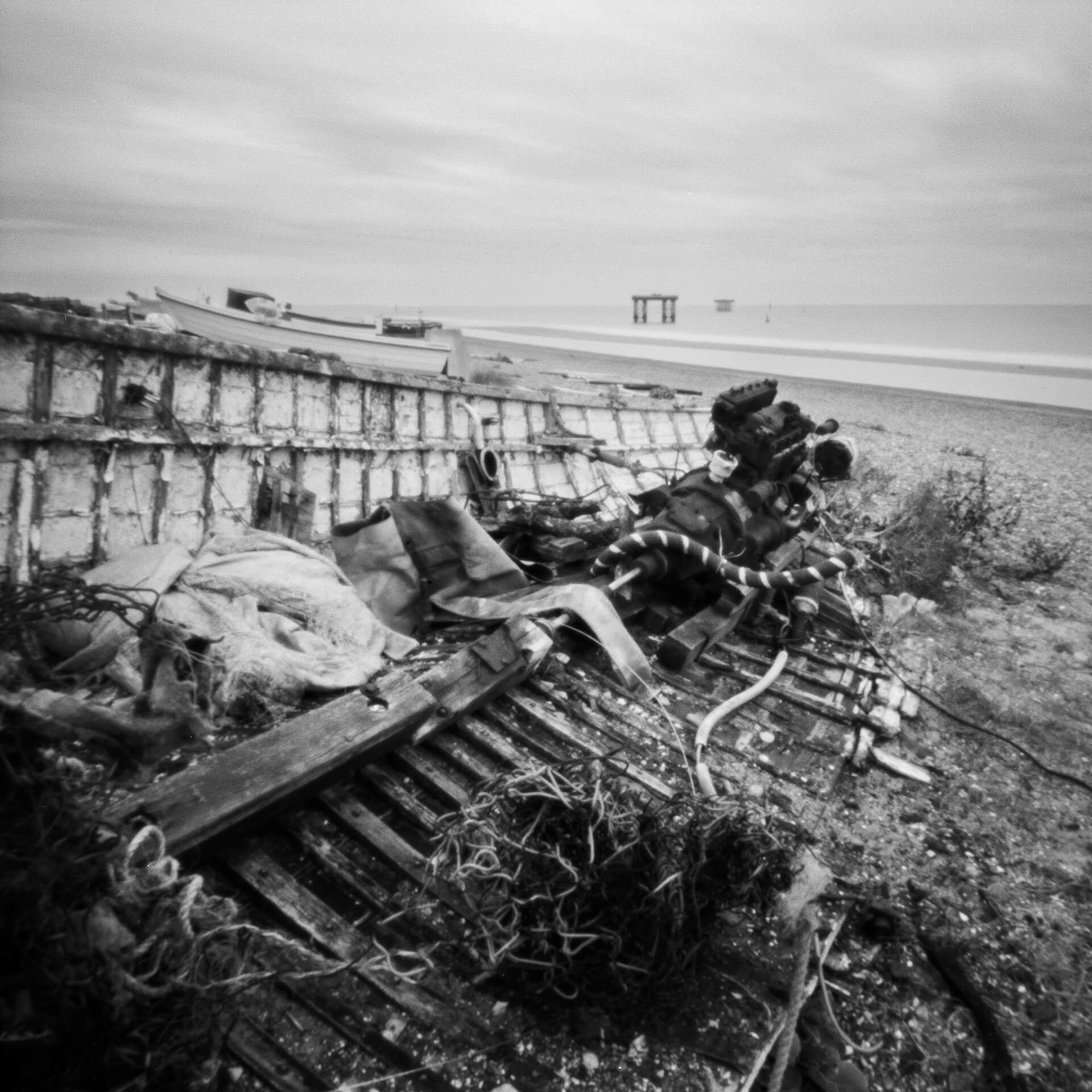The Joy Of Pinhole Photography
Pinhole photography consists of a simple lightproof box (cardboard or wooden in most cases), a pinhole aperture, and film. Light is passed through the aperture to project an inverted image onto the paper or film. It’s the absolute basic concept of photography and can be an exciting intro to analogue photography. Using a pinhole can yield some really interesting and ethereal results. Most pinholes are wide angle, so this allows you to easily frame your image. I say easily… but most pinhole cameras lack any sort of viewfinder. Some cameras have guide on the top which gives a rough idea, though it’s not as tricky as you might think to compose your shot. Part of the joy with pinhole is an element of the unknown until you see the developed exposure.
Time is a factor to consider when exposing your shot. Not just in terms of framing, but the fact that your aperture is so small. The Zero Image pinhole camera that I’ve used here is roughly around f/235, so when using something like Ilford FP4, you can easily have exposure times that go into minutes, especially in low light. Thanks to a handy app called pinhole assist, it’s fairly straightforward to work out exposure times.
Working with pinhole can be a calm and medititavie process. It is also rewarding when you get great results. exciting introduction to analogue photography as it reduces it to it’s most basic elements.
These images are just from one visit and one roll. Whilst I’ve shot pinhole in the past, it was something that I needed to refamiliarise myself with. It’s something I will experiment more with to further my creativity.
All images shot with a Zero Image 69 on Ilford FP4 125.
Develop and Scan by FilmDev (Noritsu)








